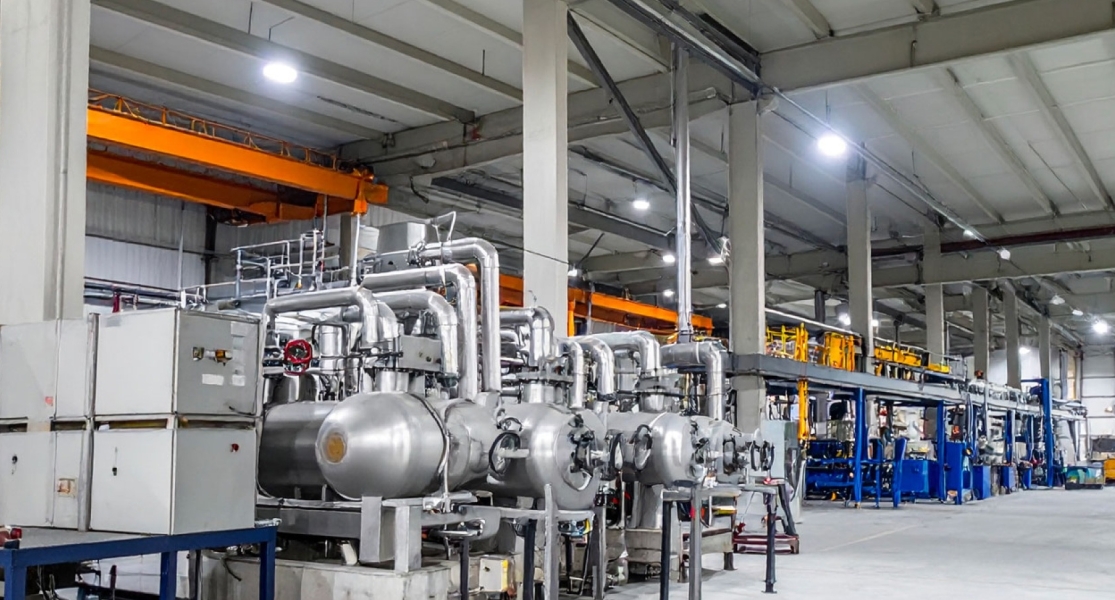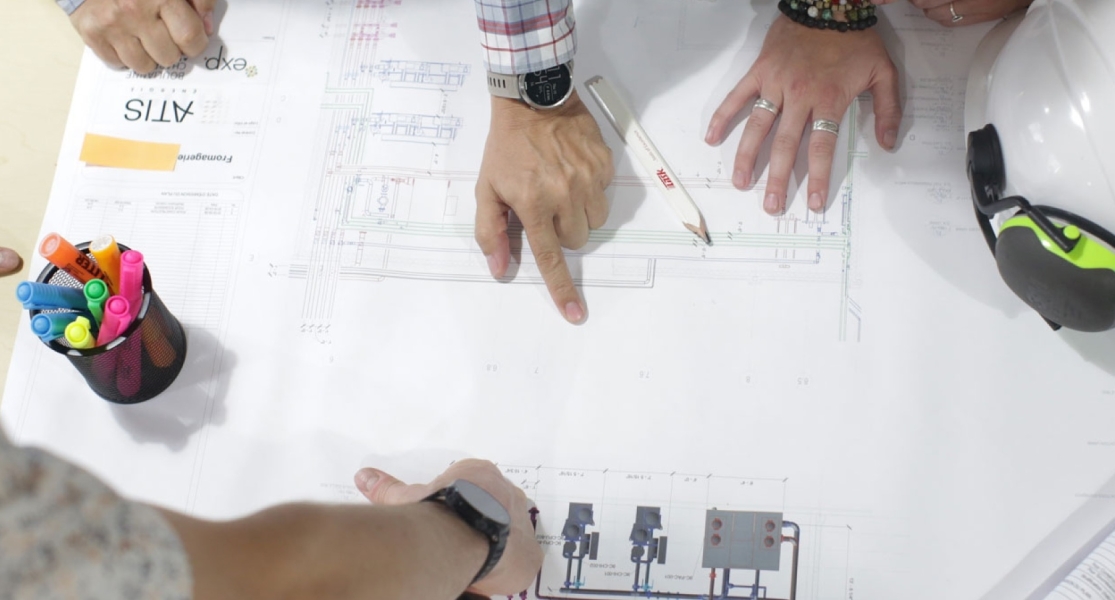
Quadrupling chemical production
Context
Since 2008, ATIS Énergie has been supporting a major chemical producer in its mission to reduce energy consumption at its main site in Quebec. The company’s vast industrial complex is made up of more than 150 buildings.
Our accomplishments
Comprehensive audit of the site performed in 2008
Designed and implemented Engineering, Procurement and Construction Management (EPCM) projects for an integrated energy recovery, management and distribution system in the plant’s most energy-intensive sector
Designed energy recovery systems for distillation columns
Designed and implemented (EPCM) an energy recovery network
Designed and implemented (EPCM) renewable thermal energy production systems
Designed and implemented (EPCM) energy supply and production systems for new buildings on the industrial site
Results
This project, carried out in 2016, involved implementing integrated networks for the recovery, distribution, accumulation and recovery of thermal energy from renewable sources
Deployed a heat network spanning several kilometres
Installed infrastructure to produce renewable thermal energy
Annual reduction in energy consumption equivalent to 9 GWh in electricity and 200,000m³ of natural gas
This producer has expanded its operations in recent years, significantly increasing its production capacity while developing several new products. This growth has resulted in the addition of several dozen new buildings on the site. We were tasked to oversee all industrial processes and energy management for the entire project, to take care of all industrial processes and energy management for the entire project, covering both existing and new buildings.
Our accomplishments
Full site energy audit performed in 2016
Designed and implemented (ECPM) energy-efficient systems for new buildings
Implemented heat recovery systems from exothermic processes, allowing both old and new buildings to be heated, in addition to supplying existing and future exothermic processes
Designed a cooling network for air conditioning new buildings;
Designed and implemented (EPCM) integrated energy systems for all site buildings, both old and new
Designed and implemented (EPCM) several dozen kilometres of heating and air conditioning networks
Results
Our energy management strategy, focused on efficiency and innovation, proved to be cost-effective for our client
We implemented an additional power block of less than 5 MW significantly less than conventional demand requiring close to 30 MW
Energy savings of up to 50 GWh per year, representing a reduction in operating costs of more than $8 million annually
Efficient energy use meant we could avoid using natural gas, thus avoiding the equivalent of up to 9,000 of CO₂ emissions per year
Implemented several tens of kilometres of thermal and air conditioning networks
Deployed exothermic process energy recovery infrastructures, allowing this energy to be redistributed to new and existing heat-consuming buildings and processes

Development of neighbourhood heat networks
Context
From thermal loops to industrial and urban heat networks, we designed and deployed dozens of kilometres of networks, helping reduce energy consumption and greenhouse gas emissions.
In collaboration with Écohabitation, École Polytechnique de Montréal and several municipal and institutional players, our team carried out various opportunity studies to develop the heat networks. Some of the neighbourhoods to benefit from these networks across Montreal include:
Faubourgs;
Écoquartier Louvain Est (Ahuntsic-Cartierville);
Écoquartier Namur (Côte-des-Neiges)
Varennes industrial park
Our accomplishments
Full implementation of the production cycle: engineering, procurement, construction management and commissioning;
Evaluating the need for heat network based on urban resilience and carbon neutrality criteria;
Identifying available energy sources and the most suitable technologies;
Annual energy balance, including heating, cooling and waste requirements;
Analysis of the benefits and limitations of a collective heat network;
Developing an optimal governance model to ensure the success and sustainability of the network.
The results
Created heat and cold loops in factories to recover and/or redistribute energy;
Energy sharing between several buildings on the same industrial site;
Energy transfer between a producer and external client;
Reduced overall energy consumption;
Targeting carbon neutrality;
Helped strengthen urban resilience against climate change.

Other custom innovations
Whenever a client approaches us with a complex issue that has no pre-existing solution, or anytime a tech opportunity emerges on the market, we mobilize our team to find original, efficient and sustainable solutions.Just one example: we custom-designed a hair burner to meet the unique needs of our client, Olymel.
